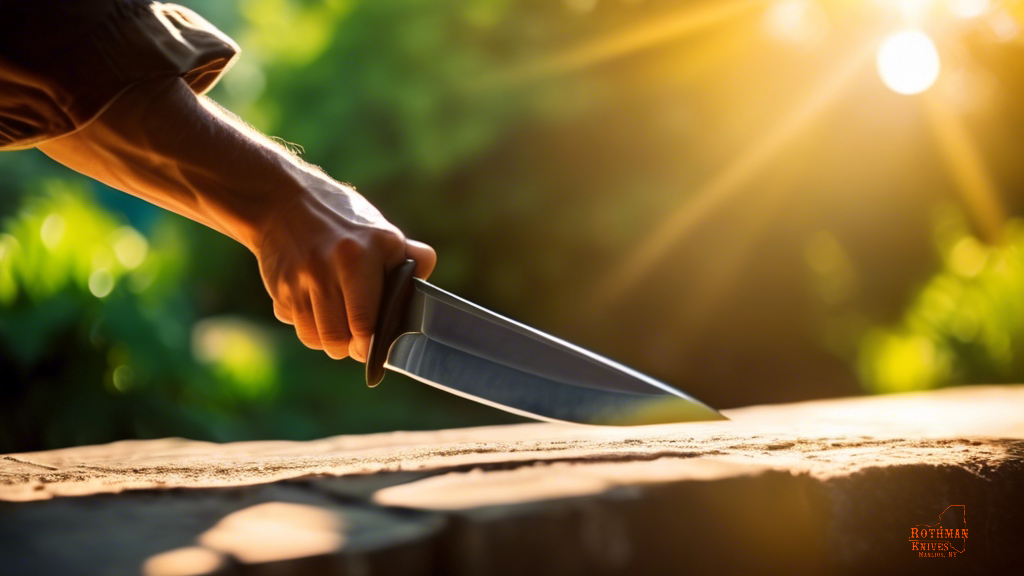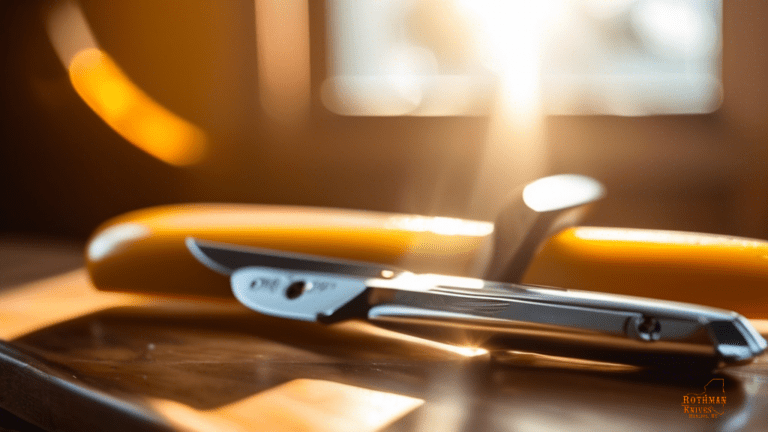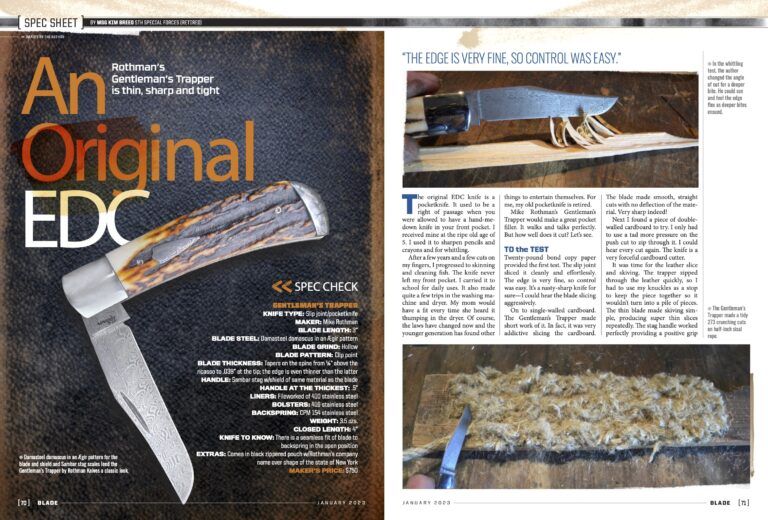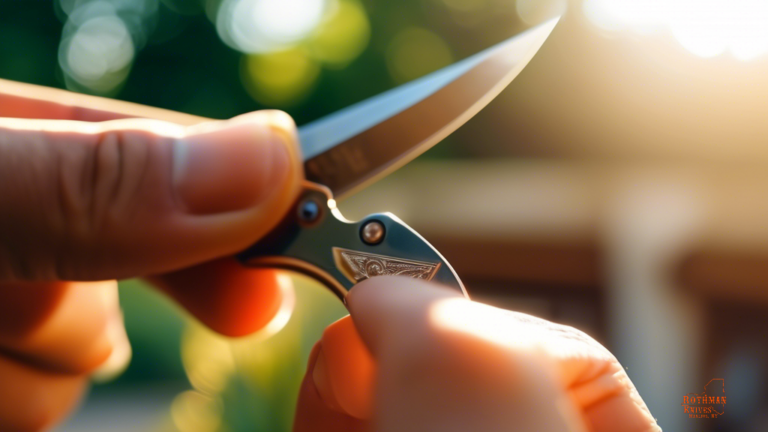Outdoor Knife Handle Maintenance: Essential Tips And Techniques
by Mike Rothman · September 9, 2024
Learn how to properly maintain your outdoor knife handle with these essential tips and techniques. Keep your knife in top condition for all your adventures! Click now for expert advice on handle maintenance for outdoor knives.
Are you an outdoor enthusiast who feels lost without your trusty knife by your side?
Well, fear not, because proper maintenance of your outdoor knife handle is crucial to ensuring its longevity and functionality. Without a well-maintained handle, your knife may fail you when you need it most, leaving you feeling stranded and unequipped in the great outdoors.
But don’t worry, with the right tips and techniques, you can easily keep your knife handle in top-notch condition and be ready for any adventure that comes your way.
From cleaning and drying your knife handle to applying protective treatments, there are simple yet essential steps you can take to ensure your knife handle remains in pristine condition. By checking for wear and tear regularly and knowing how to repair any damage that may occur, you can extend the life of your outdoor knife handle and keep it performing at its best.
So, join us as we explore the essential tips and techniques for maintaining your outdoor knife handle, and never feel unprepared in the wilderness again.
Key Takeaways
- Cleaning and drying the handle after each use is crucial to prevent damage.
- Applying protective treatments like oils or waxes creates a barrier against moisture and dirt.
- Regularly check for wear and tear on the handle to address issues early on.
- Repair damaged handles using epoxy resin to restore functionality.
Cleaning and Drying Your Knife Handle
Now that you know how important it is to keep your knife handle clean and dry, it’s interesting to note that 80% of knife damage is caused by improper maintenance.
To ensure your outdoor knife serves you well for years to come, it’s vital to regularly clean and dry the handle after each use. Start by wiping down the handle with a damp cloth to remove any dirt, grime, or residue that may have accumulated. Pay special attention to any grooves or textured areas where debris can hide.
After cleaning, make sure to thoroughly dry the handle to prevent any moisture from causing rust or corrosion. Use a clean, dry cloth to wipe down the handle and ensure it’s completely dry before storing it away.
If your knife handle is made of wood or other porous materials, be extra careful to prevent water from seeping in and causing damage.
By following these simple cleaning and drying techniques, you’ll keep your outdoor knife handle in top condition for all your adventures.
Applying Protective Treatments
To keep your blade in top condition, make sure you regularly apply protective treatments to the handle.
When you take the time to protect your knife handle, you’re not just preserving its appearance, but also extending its lifespan for all the adventures ahead.
By applying treatments like oils or waxes, you create a barrier against moisture, dirt, and other elements that could damage the handle over time.
This simple step ensures that your knife remains a reliable companion on your outdoor expeditions.
Remember, your knife is more than just a tool; it’s a symbol of your connection to the great outdoors.
By taking care of the handle with protective treatments, you’re showing respect for the adventures you’ve shared and the ones still to come.
So, grab your favorite oil or wax, and give your knife handle the care it deserves.
Your future self will thank you for the effort in maintaining this essential piece of your outdoor gear.
Checking for Wear and Tear
MAIN TOPIC:
outdoor knife handle maintenance: essential tips and techniques
PREVIOUS SUBTOPIC: "Applying Protective Treatments"
CURRENT SUBTOPIC: "Checking for Wear and Tear"
Inspect your knife’s grip for signs of wear and tear to ensure its longevity. Your outdoor adventures can take a toll on your knife handle, so it’s important to regularly check for any damage. Look for cracks, chips, or any loose parts that may affect the functionality of your knife. By addressing these issues early on, you can prevent further damage and prolong the life of your trusted tool.
Here is a table to help you identify common signs of wear and tear on your knife handle:
| Signs of Wear and Tear | Description | Action Needed |
|---|---|---|
| Cracks | Small lines on the handle | Repair or replace |
| Chips | Missing pieces of material | Sand and smooth out |
| Loose parts | Handle not securely attached | Tighten or replace |
Remember, taking care of your knife handle is essential for a safe and enjoyable outdoor experience. By staying on top of maintenance and addressing wear and tear promptly, you can ensure that your knife is always ready for your next adventure.
Repairing Damaged Handles
When a handle is damaged, it can be repaired using epoxy resin to fill in cracks and holes, creating a smooth and sturdy surface for a secure grip. This process not only restores the functionality of your outdoor knife handle but also gives it a renewed sense of strength and durability.
By carefully applying the resin and allowing it to cure properly, you can ensure that your knife handle is as good as new, ready for all your outdoor adventures.
Repairing damaged handles is a rewarding task that allows you to take care of your equipment and maintain its quality for years to come. It gives you a sense of accomplishment and pride in knowing that you have the skills to make your tools last longer.
So, don’t hesitate to grab that epoxy resin and get to work on fixing those cracks and holes in your knife handle. Your outdoor knife will thank you for it, and you’ll have a reliable companion for all your outdoor activities.
Storage and Care Tips
Proper storage and care can make a big difference in preserving the integrity of your outdoor knife handle. For example, just like a well-maintained garden, a regularly oiled and stored knife handle will bloom with longevity and durability.
To ensure your outdoor knife handle stays in top condition, consider the following tips:
- Keep your knife in a dry place away from moisture to prevent rust and corrosion.
- Regularly clean your knife handle with a mild soap and water solution to remove dirt and debris.
- Apply a thin layer of oil to the handle to keep it hydrated and protected from the elements.
By following these simple storage and care tips, you can prolong the life of your outdoor knife handle and enjoy many adventures with it by your side.
Frequently Asked Questions
How often should I replace the handle on my outdoor knife?
You should replace the handle on your outdoor knife when it starts to show signs of wear and tear, such as cracks or loose fittings. Keeping your knife handle in good condition is essential for safety and performance.
Can I use household products to clean and maintain my knife handle?
Yes, you can use household products like mild soap and warm water to clean and maintain your knife handle. Just be sure to avoid harsh chemicals that could damage the material. Keep it simple and effective!
What are some common mistakes people make when maintaining their knife handles?
When maintaining knife handles, common mistakes include using harsh chemicals, neglecting regular cleaning, over-tightening screws, and storing knives improperly. Avoid these errors to ensure your knife handles stay in top condition.
Are there any specific techniques for maintaining a wooden vs. a synthetic handle?
When maintaining a wooden handle, use wood-specific oil or wax to prevent drying out or cracking. For synthetic handles, clean with mild soap and water to avoid damage. Tailoring maintenance to each material ensures longevity.
Is it necessary to seek professional help for repairing severely damaged knife handles?
If your knife handle is severely damaged, it’s best to seek professional help for repairs. They have the expertise and tools needed to restore your knife back to its former glory. Don’t hesitate to ask for assistance!
Last Updated: July 15, 2024
Verified and Approved by:

Mike Rothman
Founder of Rothman Knives
Like This Article?
Share with your friends
Table of Contents
Latest Articles
Keep Reading
-
Essential Maintenance Tips For Prolonging The Lifespan Of Multi-tool Pocket Knives
Learn the key maintenance tips to ensure your multi-tool pocket knife stays sharp and functional for longer! Discover how to prolong its lifespan with our expert advice. Click now to master the art of proper care and maintenance.
-
Blade – January 2023
Featured Review from Blade – January 2023
-
How To Choose The Perfect Folding Pocket Knife
Learn how to choose the perfect folding pocket knife with our ultimate guide! Whether you’re a seasoned outdoorsman or just need a reliable tool for everyday tasks, these tips for choosing a pocket knife will help you find the ideal blade for all your needs. Don’t miss out – start your search now!




